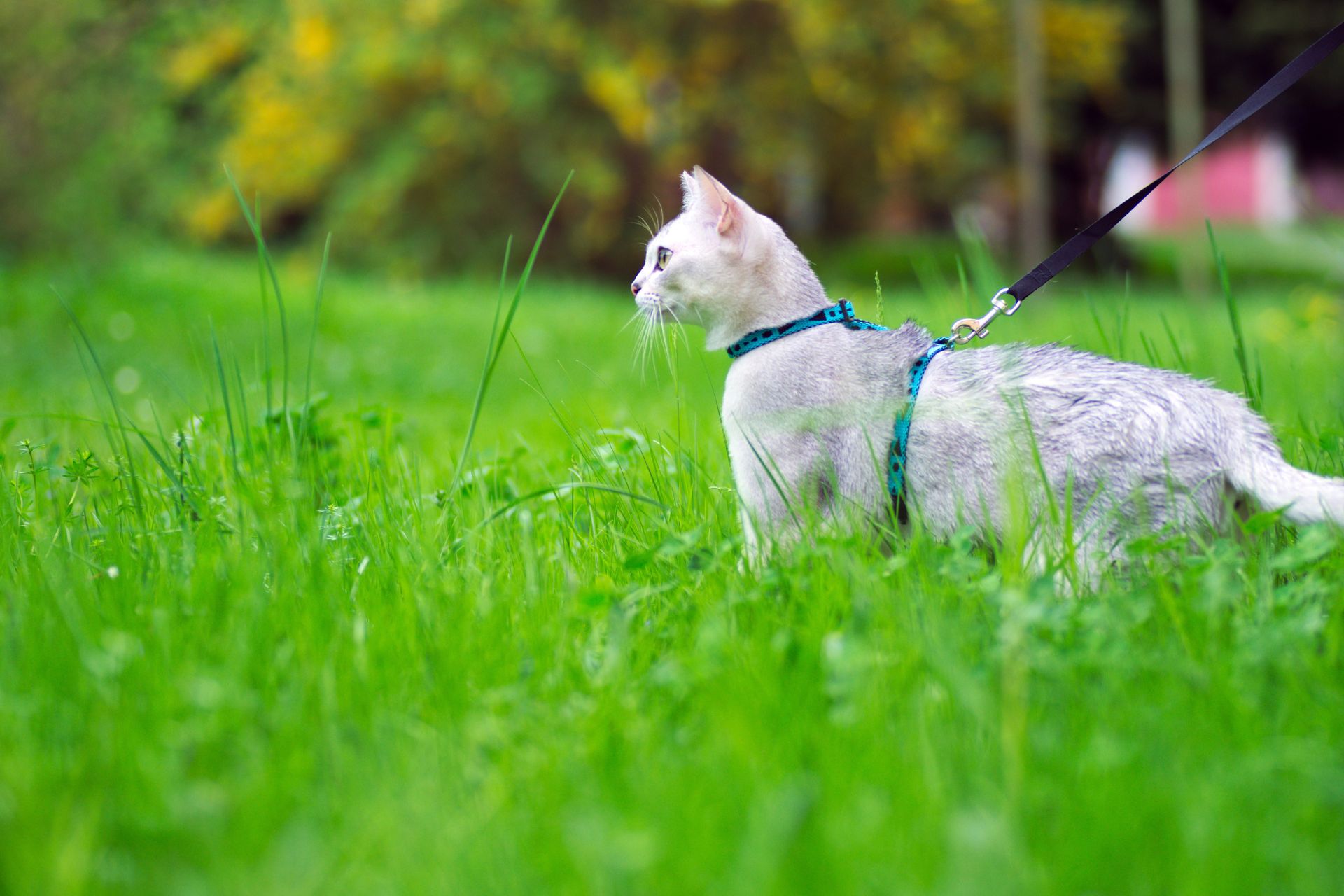When we think of taking our pets for a walk, we often picture a dog wagging its tail and pulling on its leash. However, cats can also benefit from leash training, allowing them to explore the outdoors safely while spending quality time with their owners. Leash training your cat can be challenging, but it is possible with patience, consistency, and the right techniques. In this article, we will provide you with essential tips and tricks to help you leash train your cat successfully.
Why Leash Train Your Cat?
Before we dive into the techniques of cat leash training, let’s understand why it is essential. Here are some benefits of leash training your cat:
- Safety: Leash training allows you to control your cat’s movements, preventing it from getting lost, injured, or attacked by other animals.
- Exercise: Walking on a leash can be an excellent form of exercise for your cat, helping to maintain its physical and mental health.
- Bonding: Walking with your cat can be an excellent way to bond with it, creating a deeper sense of trust and companionship.
- Stimulation: The outdoors provide cats with new sights, smells, and sounds, providing much-needed stimulation for their curious minds.
How to Leash Train Your Cat?
Now that we understand the importance of leash training let’s dive into the process. Follow these steps to train your cat to walk on a leash:
Step 1: Introduce the Harness
The first step in leash training your cat is to introduce it to the harness. A harness is a safer option than a collar since it distributes pressure evenly across the chest and shoulders, preventing injury. Here’s how to introduce the harness:
- Let your cat sniff and investigate the harness.
- Reward your cat with treats when it approaches or touches the harness.
- Place the harness on your cat for short periods, gradually increasing the duration.
- Ensure that the harness is snug but not tight, and does not rub against the skin.
Step 2: Get Your Cat Used to the Leash
Once your cat is comfortable with the harness, it’s time to introduce the leash. Here’s how to do it:
- Attach the leash to the harness and let your cat drag it around the house under supervision.
- Reward your cat with treats when it walks or plays with the leash.
- Pick up the leash and let your cat explore the house under supervision.
- Gradually increase the duration and distance of the leash walks.
Step 3: Take Your Cat Outside
Once your cat is comfortable with the harness and leash, it’s time to take it outside. However, you need to take some precautions to ensure your cat’s safety:
- Choose a quiet and familiar place for the first walk, such as your backyard or a nearby park.
- Ensure that your cat’s vaccinations are up-to-date and that it’s protected against fleas and ticks.
- Keep the leash short and allow your cat to explore at its own pace.
- Reward your cat with treats and praise for good behavior.
Tips for Successful Cat Leash Training
Leash training a cat can be a challenging task, but these tips can make the process smoother and more successful:
- Be patient and consistent: Cats can be stubborn and may take time to adjust to the harness and leash. Be patient and consistent in your training, and avoid forcing your cat to walk on the leash.
- Use positive reinforcement: Reward your cat with treats, praise, and playtime for good behavior, such as walking on the leash, exploring calmly, or coming when called.
- Start early: It’s easier to leash train a kitten than an adult cat, as they are more adaptable and less set in their ways. However, it’s never too late to start leash training an adult cat, as long as you are patient and consistent.
- Consider your cat’s personality: Some cats are more adventurous and outgoing than others, while some are shy and timid. Tailor your leash training techniques to your cat’s personality and pace.
- Don’t force your cat to walk: If your cat resists walking on the leash or shows signs of distress, such as panting, hissing, or hiding, take a break and try again later. Never drag or pull your cat on the leash, as it can cause injury or trauma.
- Practice often: The more you practice leash training with your cat, the more comfortable and confident it will become. Aim for short and frequent walks, gradually increasing the duration and distance.
FAQs about Cat Leash Training
Q: Is it safe to walk my cat on a leash?
A: Yes, as long as you follow the right precautions, such as using a harness, keeping the leash short, and avoiding busy or dangerous areas.
Q: Can any cat be leash trained?
A: Yes, although some cats may take longer or require more patience and persistence than others.
Q: What if my cat hates the harness or leash?
A: Try to introduce the harness and leash gradually, using positive reinforcement, and taking breaks when needed. If your cat continues to resist, consider consulting a veterinarian or a professional cat trainer for guidance.
Q: Can I walk my cat off-leash?
A: It’s not recommended to walk your cat off-leash, as cats can easily get lost, injured, or attacked by other animals.
Conclusion
Leash training your cat can be a rewarding and enriching experience for both you and your feline friend. It allows your cat to explore the outdoors safely, get some exercise, and bond with you. However, leash training requires patience, consistency, and the right techniques. Remember to introduce the harness and leash gradually, use positive reinforcement, and consider your cat’s personality and pace. With time and practice, you and your cat can enjoy happy walks together.











